Did you know that yellow onions are not only a staple in kitchens around the world but also offer a wide range of culinary benefits? From adding depth and flavor to dishes to providing essential nutrients, yellow onions are a versatile ingredient that can take your cooking to the next level.
In this comprehensive guide, we will delve into the world of yellow onions and explore their characteristics, flavor profile, and culinary uses. We will also provide tips on selecting and storing yellow onions, as well as some delicious recipes to try. Get ready to savor the flavor and discover the wonders of cooking with yellow onion!
Key Takeaways:
- Yellow onions are a versatile and widely used ingredient in cooking.
- They have a distinct flavor profile that adds depth to various dishes.
- Yellow onions offer a range of nutritional benefits.
- Proper selection and storage of yellow onions ensure their freshness and flavor.
- Explore different recipes and cooking methods to make the most of yellow onions in your culinary creations.
The Basics of Yellow Onions
Yellow onions, also known as brown onions, are a staple in many kitchens due to their distinct flavor and versatility. These onions belong to the Allium family and are known for their strong, pungent flavor that mellows and becomes sweet when cooked.
“Yellow onions are a flavor base for many dishes, and they are perfect for caramelizing and sautéing,” says Chef John Smith, a renowned culinary expert. “Their layered structure and firm texture make them a versatile ingredient in cooking.”
Yellow onions serve as the foundation for flavor in countless recipes. They act as a starting point in soups, stews, and sauces, adding depth and complexity to the overall taste. When caramelized, yellow onions develop a rich, deep flavor that enhances the savory notes of dishes. Sautéing yellow onions brings out their natural sweetness and creates a delicious caramelized effect.
Yellow onions are an essential ingredient in various cuisines and cooking styles. Their robust flavor pairs well with a wide range of ingredients and techniques. Whether you’re making a classic French onion soup, a hearty stir-fry, or adding depth to your favorite sauce, yellow onions are a go-to choice for professional chefs and home cooks alike.
| Type of Onion | Flavor | Best Cooking Methods |
|---|---|---|
| Yellow Onions | Pungent when raw, sweet when cooked | Caramelizing, sautéing |
| White Onions | Mild, slightly sweet | Raw in salads, salsas, pickling |
| Red Onions | Mild, slightly tangy | Grilling, roasting in Mediterranean dishes |
Yellow onions offer a versatile flavor base for a wide range of recipes, bringing depth and complexity to dishes. Their ability to caramelize and sauté beautifully makes them a favorite among chefs and home cooks alike.
Characteristics and Flavor Profile of Yellow Onions
Yellow onions are known for their unique characteristics and flavor profile. These onions have a high sulfur content, giving them a pungent aroma and robust flavor that sets them apart from other varieties.
When yellow onions are cooked, they undergo a transformation that deepens their flavor, making them ideal for adding complexity to a wide range of dishes. As they heat up, their natural sweetness intensifies, creating a caramelized richness that enhances the overall taste.
The tightly packed layers of yellow onions and their firm texture make them perfect for various culinary creations. Whether they’re diced and added to soups, sautéed for stir-fries, or caramelized to perfection, yellow onions provide a flavorful foundation to countless recipes.
Flavor Profile of Yellow Onions
Yellow onions have a strong, pungent flavor that can be described as mildly sweet and tangy. The sulfur compounds present in these onions contribute to their characteristic aroma and robust taste. When caramelized, yellow onions develop a deep, sweet flavor that adds depth and richness to dishes.
Culinary Characteristics of Yellow Onions
The unique characteristics of yellow onions make them versatile in the kitchen. Their firm texture allows them to hold up well during cooking, whether it’s a long braise or a quick sauté. The layers of yellow onions also break down nicely, providing a smooth and luscious texture when caramelized or cooked down.
“Yellow onions have a distinct flavor profile that adds depth and complexity to a variety of dishes. Their pungent aroma and robust flavor make them an essential ingredient in many cuisines.”
| Characteristic | Description |
|---|---|
| Aroma | Pungent and strong |
| Flavor | Robust, mildly sweet, and tangy |
| Texture | Firm and layered |
| Cooking Methods | Caramelizing, sautéing, braising |
| Uses | Flavor base, soups, stews, sauces, stir-fries |
The distinct characteristics and flavor profile of yellow onions make them a delightful addition to various dishes. Whether you’re looking to enhance the taste of your soups, stews, or sauces, or you’re in the mood for some caramelized goodness, yellow onions are sure to bring a burst of natural sweetness and robust flavor to your culinary creations.
Culinary Uses of Yellow Onions
Yellow onions are incredibly versatile and can be used in a wide range of dishes. Their robust flavor and aroma make them an essential flavor base in soups, stews, and sauces.
They add depth and complexity to these dishes, creating a savory foundation for a delicious meal.
In addition to being a flavor base, yellow onions can also add texture and flavor to salads and sandwiches. When sliced thinly, they provide a satisfying crunch and a burst of flavor. Mixing them with other fresh ingredients adds a delightful contrast to your dish.
One of the most popular ways to cook yellow onions is sautéing. This method enhances their natural sweetness and brings out their rich flavors. Sautéed yellow onions can then be used as a topping for burgers, hot dogs, or as a filling for wraps and quesadillas.
Yellow onions are also excellent for caramelizing. This slow-cooking process transforms them into a sweet and luscious condiment. They add a depth of flavor to dishes like French onion soup, sandwiches, and roasted meats.
Stir-fries and other Asian-inspired dishes benefit greatly from the addition of yellow onions. Their strong flavor can stand up to bold sauces and spices, adding complexity to the overall taste.
With their versatility and ability to enhance the flavor of various recipes, yellow onions are a staple in the kitchen. From flavor bases to sautéing, caramelizing, and adding texture to dishes, their culinary uses are endless.
“Yellow onions are the flavor-building heroes of my kitchen. They add depth and complexity to my soups, stews, and sauces, taking them to a whole new level of deliciousness.” – Chef Emily
Culinary Uses of Yellow Onions
| Dish | Uses |
|---|---|
| Soups | As a flavor base and to add depth |
| Stews | As a flavor base and to enhance richness |
| Sauces | As a flavor base and to add complexity |
| Salads | To add texture and flavor |
| Sandwiches | To add flavor and crunch |
| Sautéing | As a versatile cooking method |
| Caramelizing | To add sweetness and richness |
| Stir-fries | To add bold, savory flavors |
Selecting and Storing Yellow Onions
When it comes to cooking with yellow onions, selecting the right ones and storing them properly is essential to ensure maximum freshness and flavor. Here are some guidelines to follow:
Selecting Yellow Onions
When choosing yellow onions at the store or farmers’ market, pay attention to their firmness and size. Look for onions that are firm and heavy for their size, indicating freshness and optimal quality. Avoid onions that feel soft or have signs of sprouting, as these are indications of age and potential spoilage. By selecting firm and sprout-free onions, you can be confident in their freshness for your recipes.
Storing Yellow Onions
After bringing your yellow onions home, it’s important to store them correctly to maintain their flavor and quality. Keep yellow onions in a cool and dry place, ideally between 45°F and 55°F (7°C and 13°C). A pantry or cellar is often suitable for this purpose. However, avoid storing onions in direct sunlight, as exposure to light can lead to premature spoilage.
It’s also crucial to store yellow onions separately from other produce. Onions release gases as they ripen, which can accelerate the spoilage of nearby fruits and vegetables. By keeping them separate, you can prevent premature spoilage and extend the shelf life of your yellow onions.
For an easy reference, here’s a simple table summarizing the key points for selecting and storing yellow onions:
| Guidelines | Tips |
|---|---|
| Selecting Yellow Onions | Choose firm and heavy onions with no signs of sprouting |
| Storing Yellow Onions | Keep in a cool and dry place away from direct sunlight Store separately from other produce |
By following these guidelines, you can enjoy the full flavor and freshness of your yellow onions in your culinary creations.
Signs of Spoiled or Bad Yellow Onions
As a cook, it is crucial to know how to identify spoiled or bad yellow onions to ensure your dishes turn out delicious and safe to eat. Here are the key signs to look out for:
- Softness and Mushiness: When a yellow onion feels soft or mushy to the touch, it is a clear indication of spoilage. The texture should be firm and crisp.
- Mold or Discoloration: If you notice any mold growth or unusual discoloration, such as brown spots or black patches, on the yellow onion’s skin or flesh, discard it immediately.
- Unpleasant Odor: Spoiled yellow onions emit a pungent and unpleasant odor. If the onion smells off or rotten, it is best to avoid using it in your recipes.
- Sprouting: When a yellow onion starts sprouting green shoots, it indicates that it is past its prime. Sprouting onions are not ideal for cooking, as the flavor and texture may be compromised.
- Sliminess: If the outer layers or flesh of a yellow onion appear slimy or slippery, it is a sign of spoilage. Fresh onions should have a dry and crisp texture.
Remember, using spoiled yellow onions can have a significant impact on the flavor and safety of your dishes. It’s always better to be safe than sorry when it comes to working with fresh ingredients.
Signs of Spoiled or Bad Yellow Onions
| Signs of Spoilage | Indications |
|---|---|
| Softness and Mushiness | The onion feels soft or mushy to the touch. |
| Mold or Discoloration | Visible mold growth or unusual discoloration on the skin or flesh. |
| Unpleasant Odor | Pungent and unpleasant smell. |
| Sprouting | Green shoots emerging from the onion. |
| Sliminess | Outer layers or flesh appear slimy or slippery. |
Preparing Yellow Onions for Cooking
Peeling and slicing yellow onions is an essential skill that every cook should master. To get started, follow these simple steps:
- Step 1: Begin by removing the outer skin of the yellow onion. Peel away the papery layers until you reach the smooth, yellow flesh beneath.
- Step 2: Next, slice off the root end of the onion, but leave the stem intact. This will help keep the onion together while you slice.
- Step 3: Make vertical cuts from the top to the bottom of the onion, being careful not to cut all the way through. These cuts should be evenly spaced and run parallel to the stem end of the onion.
- Step 4: Finally, slice horizontally across the onion to create diced pieces. The size of the dice can vary depending on your recipe’s requirements.
Remember, using a sharp knife is crucial for clean and precise cuts when working with yellow onions. Practice your knife skills to achieve consistent and uniform slices. With these simple techniques, you’ll be able to prepare yellow onions for cooking like a pro.
Pro Tips:
Did you know? Placing the onion in the freezer for a few minutes before peeling and slicing can help reduce the tears caused by onion’s natural compounds.
Nutritional Benefits of Yellow Onions
Yellow onions not only add flavor to your dishes but also offer a range of nutritional benefits. They are low in calories and virtually fat-free, making them a healthy addition to your meals. Additionally, yellow onions are packed with essential vitamins and minerals.
One of the notable nutritional benefits of yellow onions is their high fiber content. Fiber is important for maintaining a healthy digestive system and promoting regular bowel movements. It also helps in controlling blood sugar levels and reducing the risk of cardiovascular diseases.
Yellow onions are also a great source of vitamin C, an antioxidant that supports immune function and helps in collagen formation, promoting healthy skin and tissues.
Research suggests that white fruits and vegetables, including onions, may have protective properties against stroke. The presence of flavonoids and other compounds in yellow onions from the allium family is believed to contribute to this beneficial effect.
Moreover, the allium family, to which yellow onions belong, has been associated with a reduced risk of stomach and gastrointestinal cancers. These onions contain organosulfur compounds that have been shown to have anti-cancer properties.
Another valuable component of yellow onions is fructans. Fructans are a type of dietary fiber that can stimulate the growth of beneficial bacteria in the gut, supporting bowel function and improving overall digestive health. Fructans also have potential benefits in immune function and mineral absorption.
To fully grasp the nutritional benefits of yellow onions, let’s take a look at the table below, which highlights the key nutrients found in a medium-sized yellow onion.
| Nutrient | Amount per Medium-Sized Yellow Onion (110g) |
|---|---|
| Calories | 44 |
| Fat | 0g |
| Carbohydrates | 10g |
| Fiber | 2g |
| Vitamin C | 9% of the Daily Value |
| Potassium | 180mg |
As you can see, yellow onions are nutritious and can be a valuable addition to a well-rounded diet. Including them in your meals not only enhances the flavor but also provides you with essential vitamins, minerals, and dietary fiber.
Cooking With Onions
Onions are a versatile ingredient in cooking, offering a range of flavors from sweet to sharp. Whether you’re looking to add a caramel flavor and color to your dishes or brighten them up with raw onions, there are plenty of ways to incorporate this pungent ingredient into your culinary creations.
To bring out the rich caramelized flavor of onions, try caramelizing them slowly over low heat. This process involves cooking the onions until they turn golden brown, releasing their natural sweetness. Caramelized onions are a delicious addition to dishes like burgers, pizzas, and French onion soup.
Raw onions, on the other hand, add brightness and a bit of a kick to salads, sandwiches, and salsas. They provide a refreshing crunch and a burst of flavor that can take your dish to the next level. To minimize tearing up while chopping onions, try refrigerating them for a short time before use.
“Caramelizing onions brings out a caramel flavor and color, while raw onions add brightness to dishes.”
When it comes to storing onions, it’s important to keep them in a cool and dry place, away from direct sunlight. Once cut, onions can be stored in the refrigerator for up to 10 days. However, be sure to store them separately from other produce to prevent the transfer of flavors and reduce the risk of spoilage.
By exploring different cooking methods and storage techniques, you can make the most out of onions in your culinary adventures. Whether you’re looking to savor the rich onion flavor in caramelized dishes or add a vibrant touch to your recipes with raw onions, this versatile ingredient is sure to elevate your cooking to new heights.
Benefits of Cooking With Onions
- Onions add depth and complexity to dishes with their unique flavor profile.
- Caramelized onions bring a rich caramel taste to savory recipes.
- Raw onions provide brightness and a refreshing crunch to various dishes.
- Refrigerating onions before chopping can help reduce tearing up.
- Proper storage ensures onions stay fresh and flavorful for longer.
Using Onions in Food Service
When it comes to food service, onions are a staple ingredient that adds flavor and depth to various dishes. In particular, yellow onions and red onions are commonly used for their distinct characteristics and cooking applications. Let’s explore how these onions can be utilized in food service, taking into account seasonal differences, cooking methods, and proper storage techniques.
The Versatile Yellow Onions
Yellow onions are known for their versatility and all-purpose nature in the kitchen. They have a robust flavor that enhances the taste of a wide range of recipes. Yellow onions are ideal for creating flavor bases in soups, stews, and sauces. They can also be sautéed, caramelized, or used raw for added texture and pungency in dishes like salads and stir-fries. In food service, the versatility of yellow onions makes them a reliable choice for many culinary creations.
Red Onions for Grilling and Roasting
Red onions, on the other hand, offer a slightly milder taste and vibrant color compared to yellow onions. They are perfect for grilling and roasting, as they retain their shape and provide a delightful sweetness when cooked. Red onions add a pop of flavor to sandwiches, burgers, and grilled meat dishes. Their visually appealing appearance also makes them an attractive choice for garnishes and salads in food service settings.
Seasonal Differences and Cooking Applications
It’s important to consider seasonal differences when using onions in food service. Spring and summer onions, also known as scallions or green onions, are harvested during these seasons and are best suited for fresh or lightly cooked dishes. Their mild flavor and tender texture make them an excellent addition to salads, salsas, and garnishes.
In contrast, fall and winter onions, which are harvested later in the year, have a stronger flavor and a firmer texture. These onions are perfect for long-cooking recipes such as stews, braises, and slow-cooked dishes. The robust flavor of fall and winter onions adds depth and richness to hearty meals, making them a favorite choice for comforting dishes in food service establishments.
Choosing the Right Size and Storage Tips
Onions for food service come in various sizes, allowing chefs and cooks to select the perfect onion for their recipes. Larger onions are often preferred for slicing and dicing, while smaller onions are ideal for pickling or using as a whole in certain dishes.
Proper storage is crucial to maintain the quality and shelf life of onions in food service. Here are some storage tips:
- Store onions in a cool and dry place with good ventilation.
- Avoid storing onions near potatoes, as they can cause each other to spoil faster.
- Keep onions away from direct sunlight, as excessive light can cause them to sprout or spoil.
- Ensure onions are properly separated and not touching each other, as this helps prevent the spread of moisture and potential spoilage.
By following these storage tips, food service establishments can maintain the freshness and quality of their onions, ensuring they are always ready to be used in their culinary creations.
Now that we’ve explored the diverse uses of yellow onions, red onions, and the importance of seasonal differences, cooking applications, and proper storage techniques, let’s move on to the final section where we’ll conclude our comprehensive guide to cooking with onions.
Conclusion
Yellow onions are an essential ingredient in the culinary world, known for their flavor, versatility, and ability to elevate any dish. From soups and stews to stir-fries and sauces, the distinct taste of yellow onions adds depth and complexity to a wide range of recipes.
Whether you’re an experienced chef or a cooking enthusiast, incorporating yellow onions into your culinary creations is a surefire way to enhance the flavor profile of your dishes. Their robust flavor and natural sweetness make them a favorite among chefs, while their ability to caramelize beautifully adds a touch of richness to any meal.
So why not experiment with the incredible flavors of yellow onions in your cooking? Let your creativity flow and discover the countless ways you can use this versatile ingredient to infuse your dishes with deliciousness. From hearty comfort foods to light and refreshing salads, yellow onions are a kitchen staple that will never disappoint.

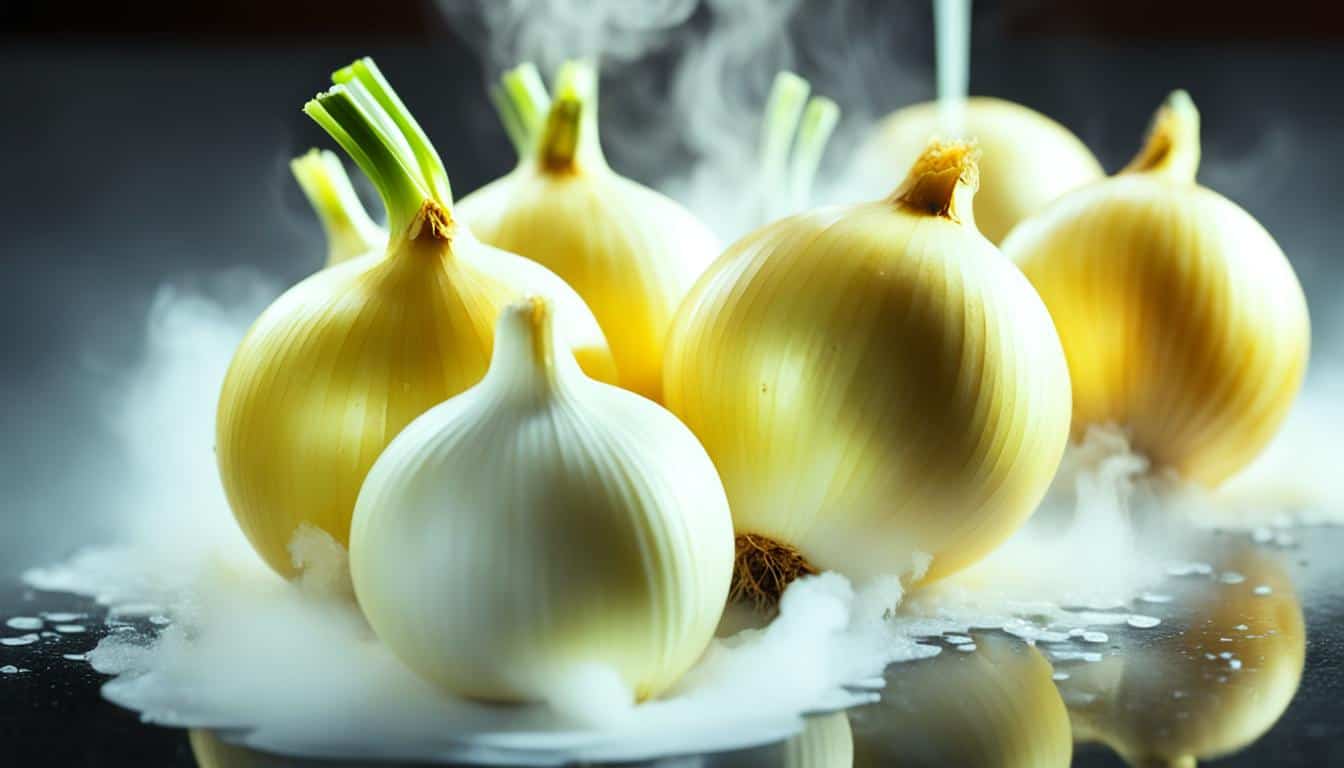
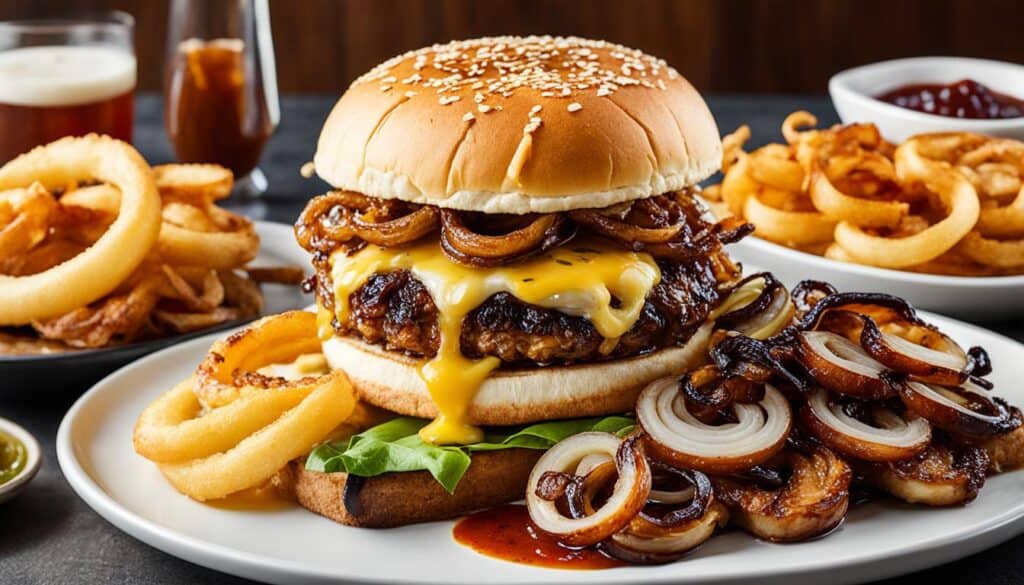
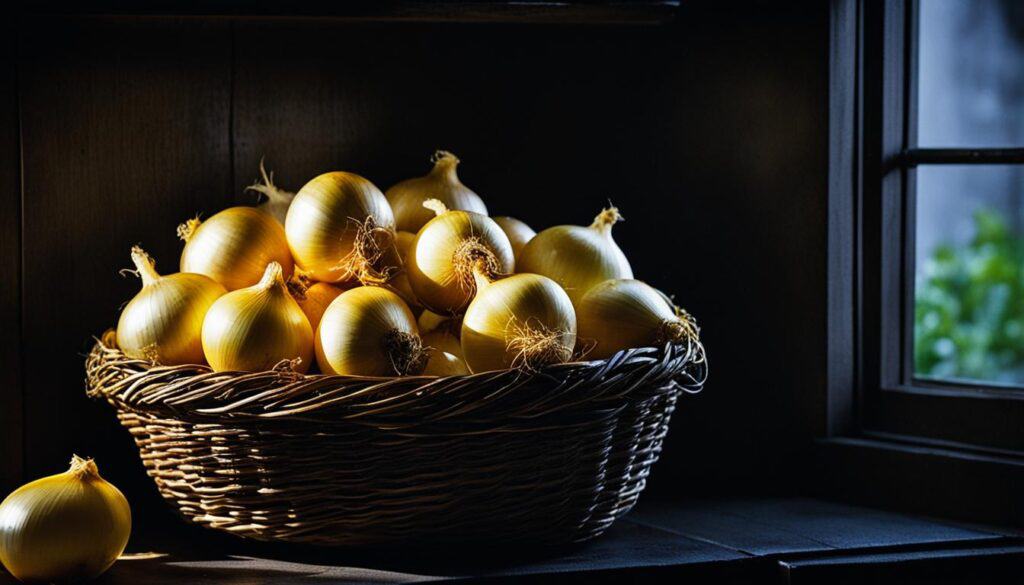
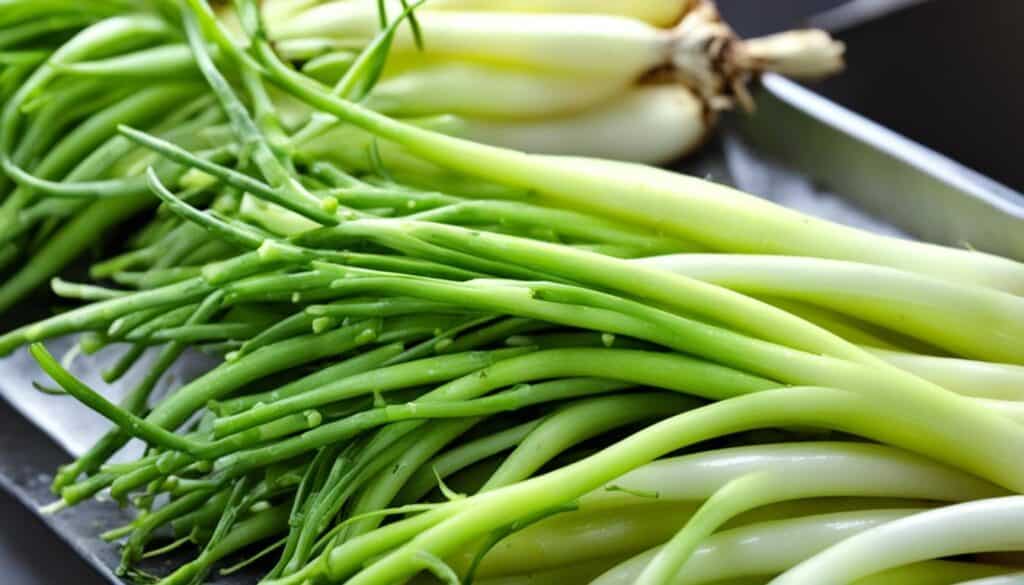
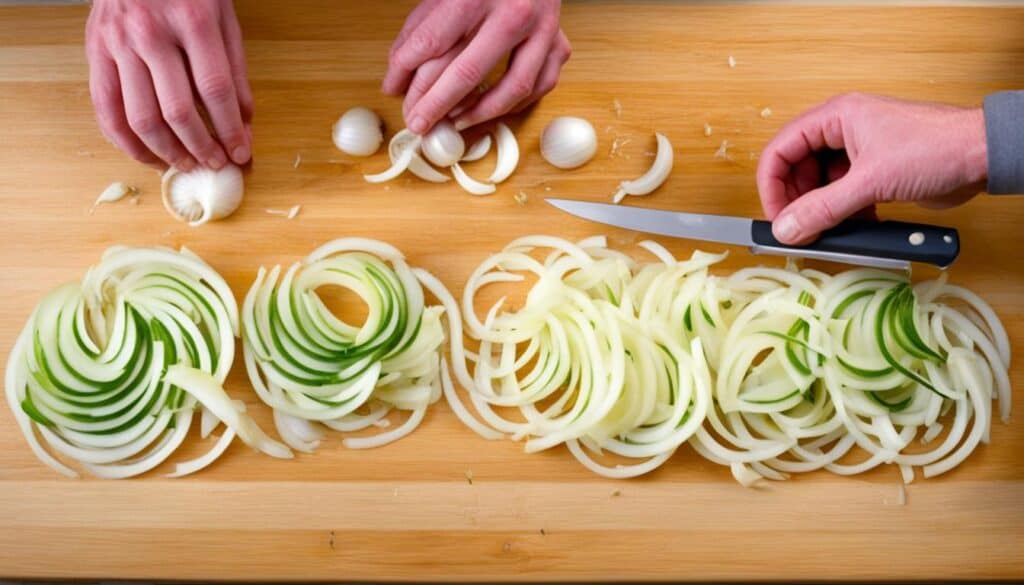




Leave a Reply